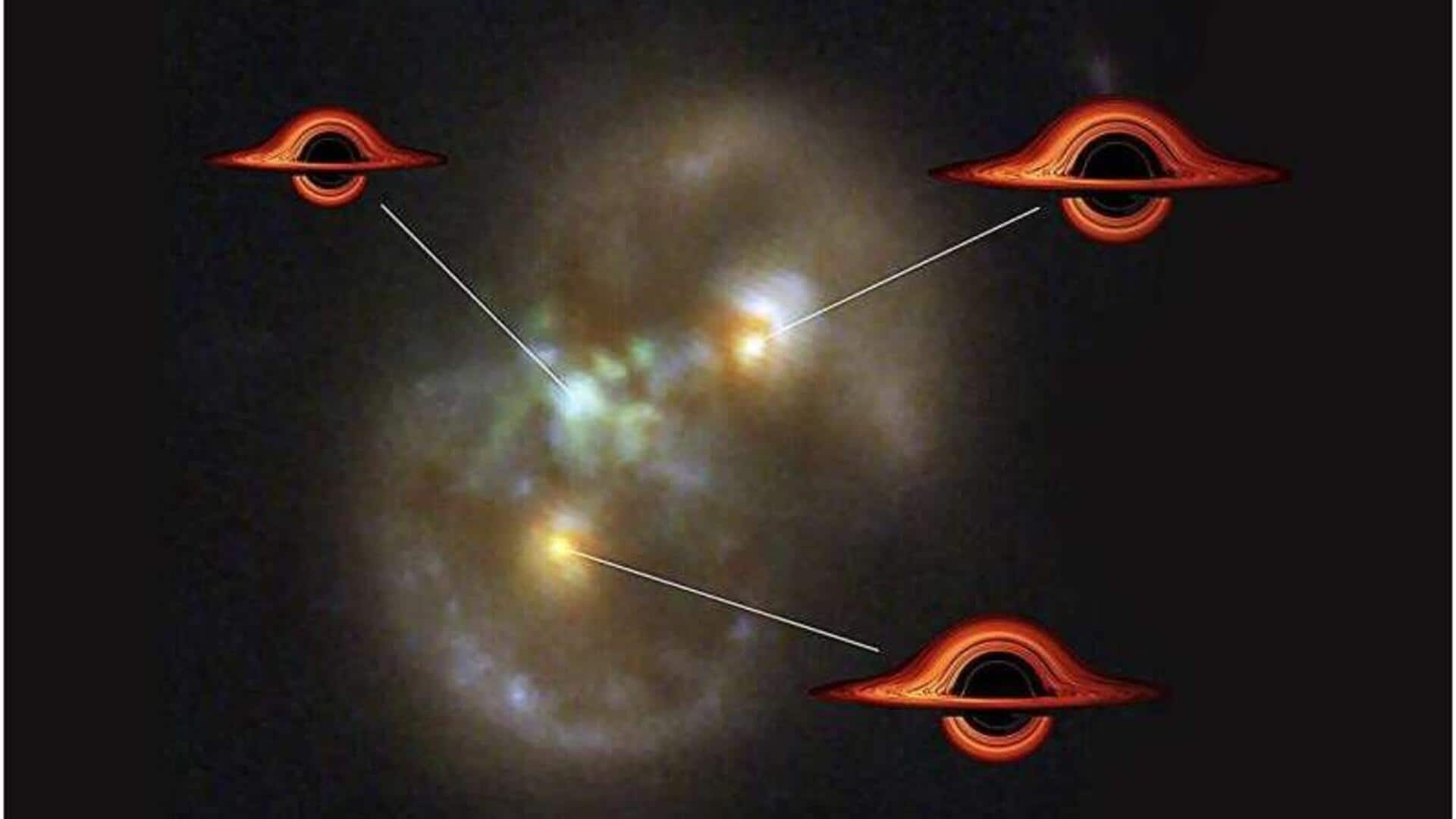
Watch: Supermassive black hole found in an 'Infinity' galaxy
What's the story
A team of astronomers led by Yale University professor Pieter van Dokkum has discovered a supermassive black hole in an "Infinity" galaxy. The infinity symbol-shaped celestial body is located in the middle of the merging galaxies and surrounded by a gas cloud. The discovery hints at a new way for black holes to form, and offers a possible explanation for the existence of very massive black holes in our early universe.
Formation debate
Discovery challenges existing theories of black hole formation
The discovery of a supermassive black hole in the "Infinity" galaxy challenges existing theories of black hole formation. The "light seeds" theory suggests that small black holes formed from collapsing and exploding stars eventually merged into supermassive ones. However, this theory doesn't explain the early appearance of supermassive black holes in the universe, as observed by NASA's James Webb Space Telescope.
Alternative theory
'Heavy seeds' theory and its implications
The "heavy seeds" theory, supported by Yale astrophysicist Priyamvada Natarajan, proposes that large black holes could form from collapsing gas clouds. However, this theory has been complicated by the fact that collapsing gas clouds usually form stars instead of black holes. The discovery of the supermassive black hole in the "Infinity" galaxy could provide a missing link in understanding how extreme conditions could lead to black hole formation.
Confirmation required
Need for further research to confirm findings
Van Dokkum and his team have stressed the need for further research to confirm these findings and their implications for black hole formation. The discovery of the new supermassive black hole could help explain how incredibly massive black holes existed in the early universe, providing more insight into cosmic evolution.